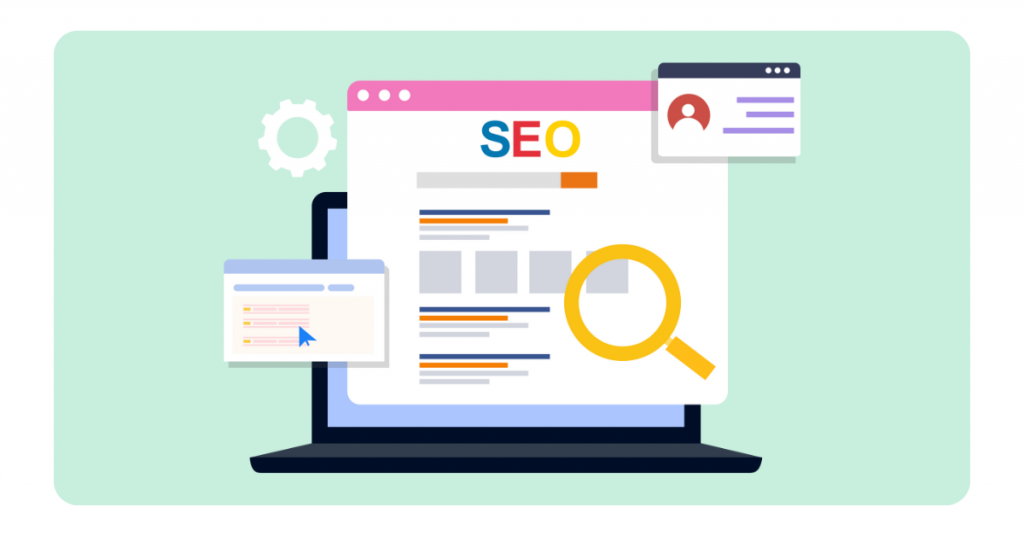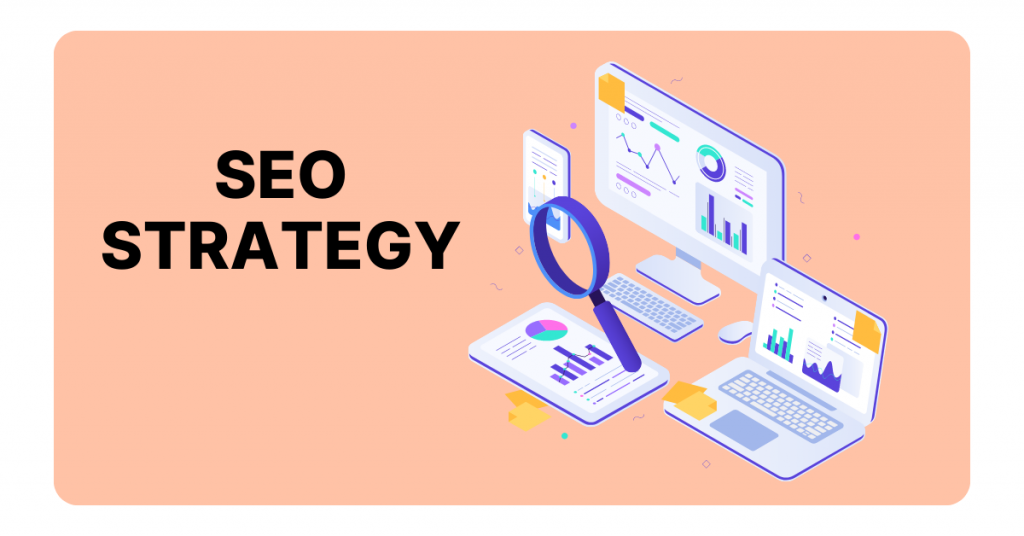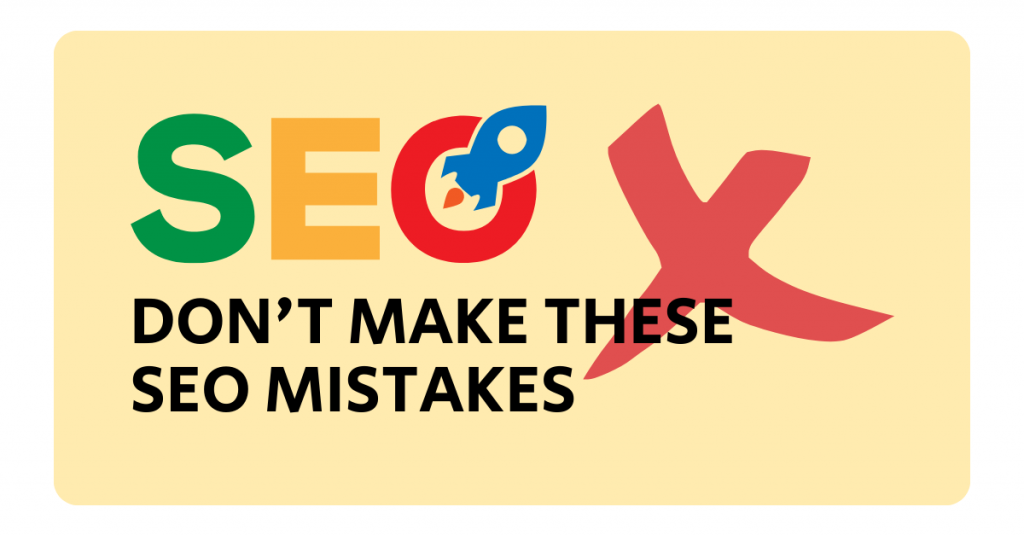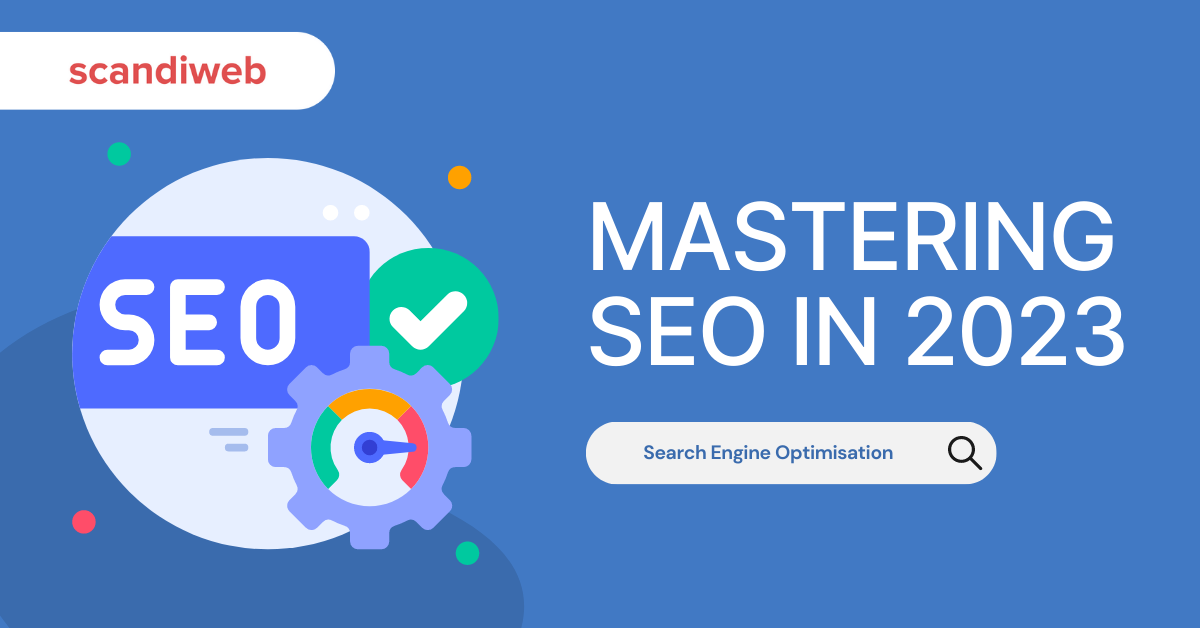As the digital landscape continues to evolve, mastering the art and science of search engine optimization (SEO) has transitioned from being optional to becoming a necessity. From driving organic traffic to enhancing brand visibility, SEO holds the key to your brand’s digital success. In this comprehensive guide, we’ll take you on a journey through the intricacies of SEO, offering practical insights and essential tools to help you navigate this ever-changing terrain of SEO. Let’s dive in!
Overview
- Understanding SEO optimization is essential for businesses to increase visibility, drive organic traffic and improve user experience.
- SEO involves a range of strategies, such as on-page optimization, off-page optimization, and technical SEO.
- Voice search optimization and leveraging AI technologies can help you stay ahead in the evolving world of SEO.
Understanding SEO

Imagine you’ve just opened a new restaurant in the heart of the city. You’ve got an amazing menu, a wonderful ambiance, and top-notch service. But there’s one problem—nobody knows you exist. This is where SEO comes into play. Think of your website as your restaurant and SEO as your promotional strategy. Much like a billboard or a newspaper ad, SEO helps your “restaurant” stand out in the bustling metropolis of the Internet.
But how does it accomplish this? Let’s delve deeper.
What is search engine optimization (SEO)?
At its core, search engine optimization is all about enhancing your website’s visibility in search engine results. It’s the art and science of tailoring your website’s content, structure, and backlinks to improve its performance on search engines. The ultimate goal is to rank higher in search results, making it easier for potential customers to find you.
SEO optimization isn’t just about stuffing your content with keywords. It’s a holistic approach that involves a range of strategies, from setting clear goals to creating SEO-friendly content and building quality backlinks. By optimizing these factors, you can create a website that both users and search engines love.
Why SEO matters
In the digital age, having a strong online presence isn’t just a nice-to-have but a must-have. With billions of searches conducted every day, search engines are the new Yellow Pages. They’re the first place people turn to when they’re looking for information, products, or services. That’s why understanding how search engines work, SEO, and search engine marketing matters. Utilizing tools like Google Search Console can help you monitor and improve your website’s performance in search engines.
SEO is about optimizing your website to rank higher in search engine results, making it more visible to potential customers. And with the right strategy, you can attract more organic traffic, boost brand recognition, and, ultimately, increase sales through organic copnversions.
But it’s not just about driving traffic. SEO also helps improve the user experience, making your website easier to navigate, faster to load, and more enjoyable to use. It’s a win-win situation!
Key components of SEO

Now that we’ve covered the basics of SEO, let’s take a closer look at its key components. Much like a well-oiled machine, successful search engine optimization involves several moving parts that work together to improve your website’s search engine performance.
These components can be broadly categorized into three areas: on-page SEO, off-page SEO, and technical SEO.
On-page SEO
On-page SEO is all about optimizing the content that’s on your website. This includes the actual text and images, as well as the meta tags and headings that tell search engines what your website is about. Think of on-page SEO like a book. Your content is the story, your meta tags and headings are the chapter titles, and your keywords are the main characters. Just as a well-written story draws readers in, effective on-page SEO makes your website more attractive to both users and search engines.
From creating high-quality content to incorporating relevant keywords, on-page SEO involves a range of strategies that can dramatically improve your website’s search engine performance.
Off-page SEO
While on-page SEO focuses on optimizing your website’s content, off-page SEO is about improving its credibility and authority. This involves building a strong backlink profile and promoting your website through various channels.
Imagine you’re applying for a job. Your resume (on-page SEO) tells the employer about your skills and experience, but it’s your references (off-page SEO) that really vouch for your credibility. In the world of SEO, backlinks are like references. They’re links from other websites that point to your website, indicating that your content is valuable and trustworthy. Just like internal links, backlinks play a crucial role in enhancing your website’s visibility and authority.
From guest posting to social media marketing, there are numerous ways to build quality backlinks and enhance your website’s off-page SEO.
Technical SEO
Technical SEO is like the foundation of a house. It’s the behind-the-scenes work that ensures your website is structurally sound and easily accessible by search engines. This involves optimizing your website’s architecture, speed, and crawlability. Just as a sturdy foundation ensures a house can withstand the elements, strong technical SEO makes sure your website can be easily crawled and indexed by search engines. It’s the groundwork that supports all your other SEO efforts, from keyword research to content optimization. Technical SEO may sound complex, but it doesn’t have to be. With the right tools and resources, you can optimize your website’s technical SEO and ensure it’s built on a solid foundation.
Developing an SEO strategy

Having a clear, well-defined SEO strategy is crucial for achieving your SEO goals. Much like a roadmap, an SEO strategy guides your optimization efforts, helping you make the most of your resources and measure your progress.
It helps you identify the best keywords to target, the most effective content to create, and the best topics to tackle.
Setting goals
The first step in developing an SEO strategy is setting clear, measurable goals. Whether you’re looking to increase organic traffic, boost brand visibility, or improve user engagement, having clear goals can help focus your SEO efforts and measure your success.
Your goals should be specific, measurable, achievable, relevant, and time-bound (SMART). For example, instead of aiming to “increase organic traffic,” you might want to set a goal to “increase organic traffic by 20% in the next six months.” By setting SMART goals, you can ensure your SEO efforts are aligned with your business objectives and track your progress over time.
Performing keyword research
Once you’ve set your goals, it’s time to conduct keyword research. Keywords are the terms and phrases that people use to search for information online. By identifying the keywords that are relevant to your business, you can optimize your content around these terms and improve your search engine rankings.
Keyword research isn’t just about finding the most popular search terms on Google. It’s also about understanding the intent behind these terms. For example, someone searching for “best pizza in New York” is likely looking for restaurant recommendations, while someone searching for “how to make pizza” is probably looking for a recipe. By understanding search intent, you can create content that meets the needs of your audience and ranks higher in search results.
There are numerous keyword research tools available that can help you identify valuable search terms and analyze the competition.
Creating SEO-friendly content
Creating SEO-friendly content is a critical component of any SEO strategy. This involves producing content that is both informative and engaging, as well as optimized for search engines.
When creating SEO-friendly content, it’s important to remember that you’re writing for both humans and search engines. Your content should be engaging and valuable to your audience, but it should also include relevant keywords and be structured in a way that makes it easy for search engines to understand.
From catchy headlines to clear, concise paragraphs, there are numerous ways to make your content more SEO-friendly.
Building quality backlinks
Building quality backlinks is another key component of a successful SEO strategy. Backlinks are links from other websites that point to your website. They’re like votes of confidence, indicating to search engines that your content is valuable and trustworthy. But not all backlinks are created equal. The quality of a backlink depends on the authority and relevance of the website linking to you. For example, a backlink from a well-known news website is much more valuable than a backlink from a small, unknown blog.
There are numerous ways to build quality backlinks, from guest posting to social media marketing.
SEO tools and resources
Utilizing SEO tools and resources can significantly streamline the optimization process and enhance your SEO efforts. From keyword research tools to analytics and monitoring tools, utilizing the right tools can make the difference between a successful SEO strategy and a failed one.
Having the right tools at your disposal can help you identify the best keywords to target and track your campaigns.
Keyword research tools
Keyword research tools are your secret weapon in the world of SEO. They can help you identify high-potential search terms, analyze competition, and uncover new keyword opportunities. There are numerous keyword research tools available, each with its own strengths and weaknesses.
Some tools offer in-depth keyword analysis, while others provide a broad overview of keyword trends. By familiarizing yourself with these tools, you can make more informed decisions about which keywords to target and how to optimize your content around them.
Analytics and monitoring tools
Analytics and monitoring tools, such as Google Analytics, are like the dashboard of your SEO strategy. They provide critical insights into your website’s performance, helping you identify issues, track progress, and measure the success of your SEO efforts.
From tracking website traffic to analyzing user behavior, these tools provide a wealth of data that can help you make more informed decisions about your SEO strategy. By regularly monitoring your website’s performance, you can quickly identify and resolve issues, optimize your content, and continually improve your SEO efforts.
Learning resources
Learning resources are an essential part of any SEO strategy. They can help you expand your SEO knowledge, stay updated with the latest industry trends, and learn new strategies and techniques.
From blogs and courses to webinars and guides, there’s a wealth of SEO learning resources available. By regularly investing in your SEO education, you can stay ahead of the curve, adapt to changes in the SEO landscape, and continually improve your SEO efforts.
Common SEO mistakes to avoid

As with any endeavor, SEO is not without its pitfalls. There are several common mistakes that can hinder your SEO efforts and negatively impact your search engine rankings.
In this section, we’ll delve into these mistakes and how you can avoid them.
Keyword Stuffing
Keyword stuffing is a common SEO mistake that can harm your search engine rankings. It involves overusing your target keywords in your content, often to the point where it becomes unreadable.
While it’s important to include relevant keywords in your content, overdoing it can do more harm than good. Search engines are designed to provide users with the most relevant and high-quality results. When they detect keyword stuffing, they may penalize your website by lowering its rankings or even removing it from search results altogether.
To avoid keyword stuffing, focus on creating high-quality, relevant content that naturally incorporates your target keywords. Remember, your content should be written for humans first and search engines second.
Duplicate Content
Duplicate content is another common SEO mistake that can harm your search engine rankings. It refers to content that appears on more than one page on your website or on other websites. Search engines strive to provide users with a diverse range of results. When they encounter duplicate content, they may struggle to determine which version is the most relevant, resulting in lower rankings for both the original and copied content.
To avoid duplicate content, make sure each page on your website has unique, high-quality content. If you need to use the same content on multiple pages, consider using canonical tags to indicate to search engines which version is the original.
Ignoring Technical SEO
Ignoring technical SEO is a common mistake that can lead to poor website performance and decreased search engine visibility. Technical SEO involves optimizing your website’s structure, speed, and crawlability to ensure search engines can easily access and index its content. Just as a house needs a solid foundation, your website needs strong technical SEO. This involves optimizing your website’s architecture, improving its loading speed, and ensuring it’s accessible and crawlable by search engines. By paying attention to technical SEO, you can improve your website’s performance, enhance user experience, and increase your search engine visibility.
Local and International SEO
As the digital landscape continues to evolve, so too does the world of SEO. Today, businesses need to cater to specific geographic markets, requiring tailored optimization techniques. This is where local and international SEO come into play.
Local SEO focuses on optimizing a website for a specific geographic area, while international SEO is more focused on optimizing a website for a specific geographic area.
Local SEO
Local SEO involves optimizing your website for local search results. This involves targeting local keywords, leveraging Google My Business listings, and optimizing for local search intent. Whether you’re a small business owner looking to attract local customers or a multinational corporation targeting specific geographic markets, local SEO can help you reach your target audience and boost your search engine rankings.
From optimizing your Google My Business listing to creating local content, there are numerous ways to optimize your website for local search.
International SEO
International SEO involves optimizing your website for multiple languages and regions. This involves conducting market-specific keyword research, optimizing your website’s structure and content for different languages, and implementing hreflang tags to indicate the language and geographic targeting of your webpages.
Whether you’re a global brand looking to expand into new markets or a local business targeting a diverse customer base, international SEO can help you reach your target audience and boost your search engine rankings.
From translating your content to implementing hreflang tags, there are numerous ways to optimize your website for international search.
Staying Ahead in the Evolving World of SEO
As the digital landscape continues to evolve, so too does the world of SEO. Emerging trends such as voice search optimization and the impact of artificial intelligence on SEO are reshaping the SEO landscape, requiring ongoing adaptation and learning.
These changes mean that SEO professionals must stay up to date on the latest trends and techniques.
Voice Search Optimization
Voice search optimization is a burgeoning trend in the world of SEO. With the increasing popularity of voice-activated devices like Amazon’s Alexa and Google Home, more and more people are using voice search to find information online.
Voice search optimization involves creating conversational content, targeting long-tail keywords, and optimizing for featured snippets. By adapting your SEO strategy to the rise of voice search, you can stay ahead of the curve and ensure your content remains accessible and relevant.
Artificial Intelligence and SEO
Another emerging trend reshaping the SEO landscape is the rise of artificial intelligence. AI is increasingly influencing SEO through advanced algorithms, automated content generation, and personalized search results, not only on Google but also on other search engines. Look how you can improve your visibility in AI searches. Check out AEO services.
While AI presents new challenges for SEO, it also offers new opportunities. By leveraging AI tools and technologies, businesses can streamline their SEO efforts, improve their content, and deliver more personalized and relevant search results.
Summary
To wrap up, mastering the art and science of SEO is no longer a luxury—it’s a necessity. From driving organic traffic to enhancing brand visibility, SEO holds the key to your brand’s digital success. Whether you’re a seasoned pro or a newbie, we hope this comprehensive guide has given you valuable insights and practical tools to navigate the ever-changing terrain of SEO. So, what are you waiting for? Start optimizing!
What are your SEO goals for 2023? Whether it’s improving your site’s visibility, increasing organic traffic, or ranking higher on search engine results, our team at scandiweb is ready to help you achieve them. With expert SEO strategies tailored to your unique needs, we aim to drive your online success. Let’s connect and make your 2023 SEO objectives a reality with scandiweb.
Frequently Asked Questions
What is meant by SEO?
Search Engine Optimization (SEO) is the process of optimizing a website’s technical configuration, content relevance, and link popularity in order to improve its ranking in search engine results pages.
This can lead to an increase in traffic and visibility for the website.
Can I do search engine optimization myself?
You can certainly do SEO yourself with proper guidance and dedication. There are resources available to help you learn the basics, as well as tips for creating an effective SEO plan.
Doing your own SEO requires time investment, but you’ll be in control of your organic search initiatives and have access to valuable insights into your online presence.
What is the use of SEO?
SEO is the process of optimizing a website’s technical configuration, content relevance, and link popularity to increase its ranking in search engine results, ultimately leading to an increase in traffic to the website.
By optimizing these elements, a website can become more visible to search engines and appear higher in the search engine results pages (SERPs). This can result in more visitors to the website, which can lead to increased sales and brand awareness.
What are the 4 types of SEO?
Search engine optimization (SEO) involves four components: on-page, off-page, technical, and local optimization. All four are interconnected and play an important role in improving a website’s search engine ranking and visibility.
How can I develop an effective SEO strategy?
To develop an effective SEO strategy, set clear goals, do keyword research, create SEO-friendly content, and build quality backlinks.
This strategy will help you improve your website’s visibility in SERPs. It will also help you to attract more organic traffic to your website.



Share on: